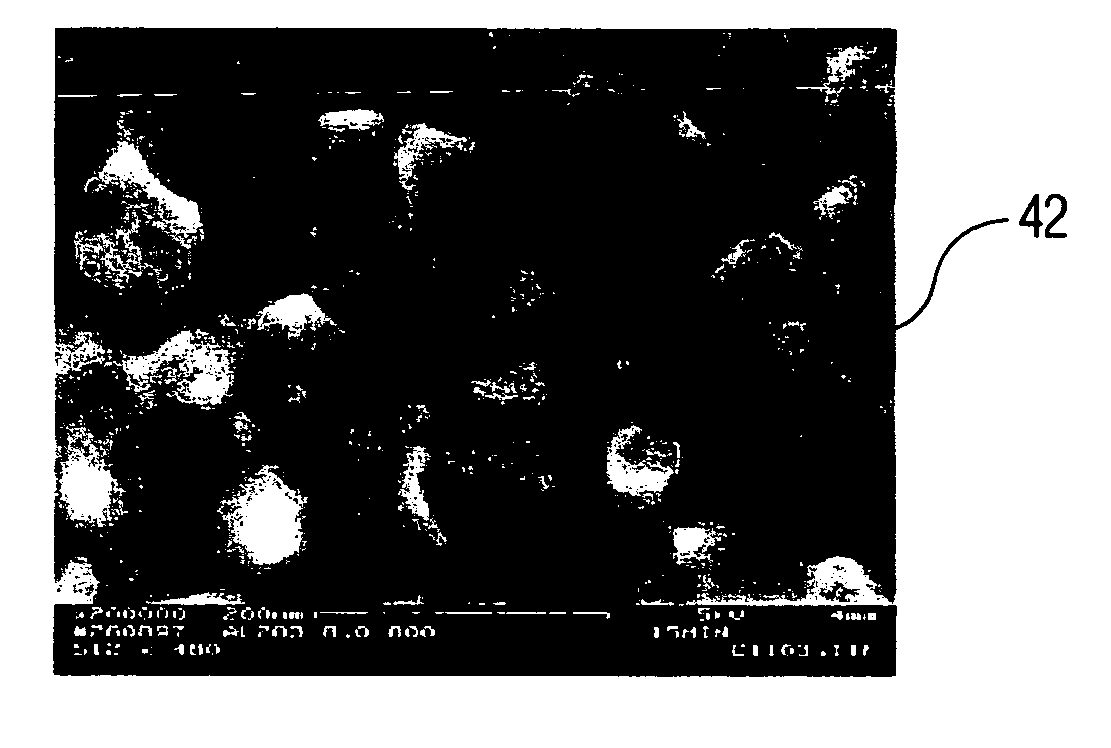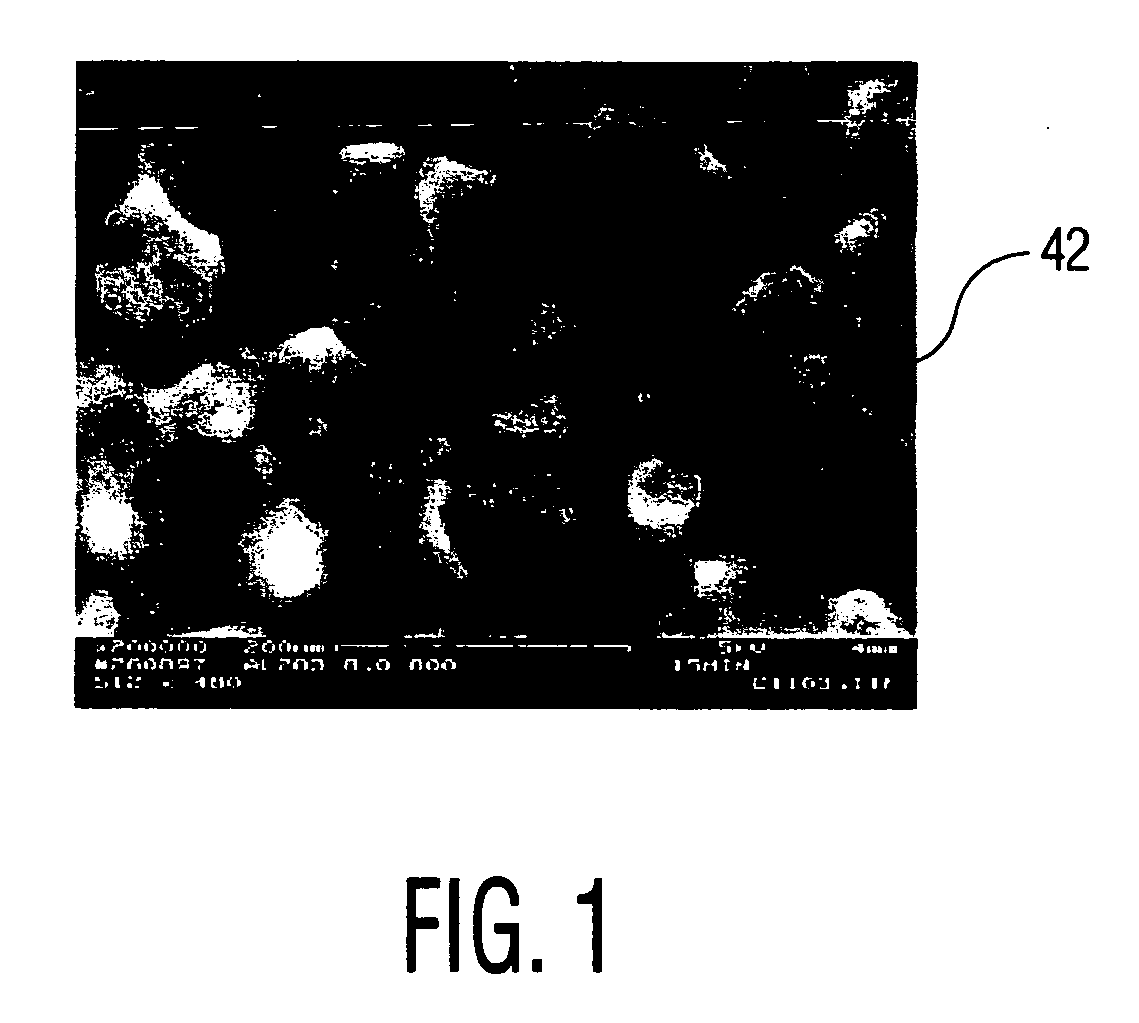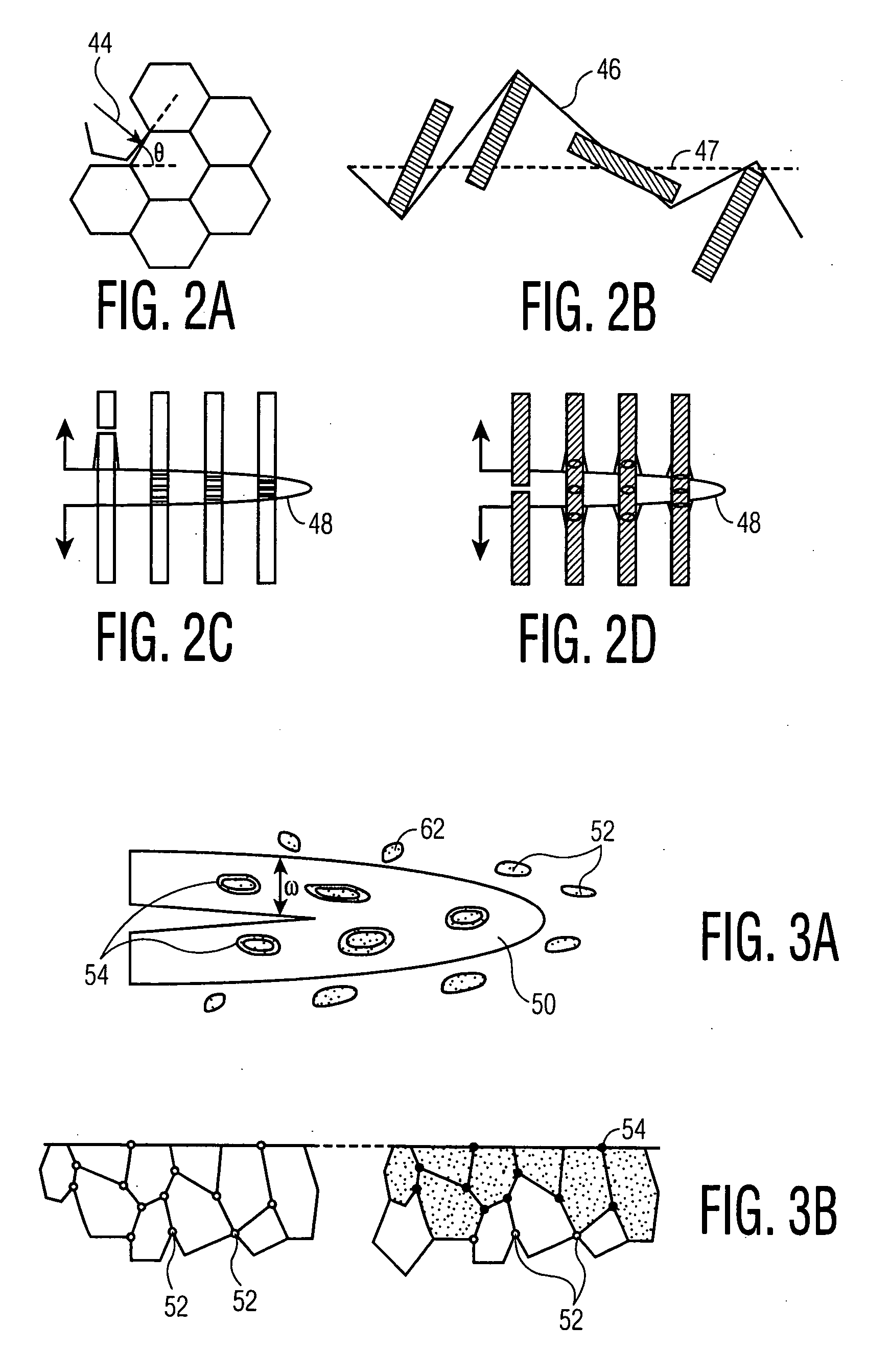Nanocomposite ceramics and process for making the same
a technology of nano-composite ceramics and composite materials, applied in the direction of nanotechnology, material nanotechnology, nanotechnology, etc., can solve the problems of limited commercial realization of such improvements, tendency to generate “explosives”, and significant property improvements in nano-ceramic composites that have only been observed experimentally, and achieve good fracture toughness and high hardness
- Summary
- Abstract
- Description
- Claims
- Application Information
AI Technical Summary
Benefits of technology
Problems solved by technology
Method used
Image
Examples
Embodiment Construction
[0034] The nanocomposite ceramic of the present invention is generally composed of a uniform dispersion of ceramic nanoparticles such as, for example, α-Al2O3 in a nanocrystalline matrix phase at least substantially composed of zirconia such as, for example, partially-stabilized t-ZrO2 (PSZ). The nanodispersed α-Al2O3 ceramic phase imparts to the resulting nanocomposite hardness, stiffness and strength, whereas the nanocrystalline PSZ matrix phase imparts to the resulting nanocomposite fracture strength and toughness. Although the present invention is generally described as having a zirconia-based matrix phase, the present invention is not limited to such and further encompasses a two-phase NCC structure having a matrix phase composed of any ceramic material, in addition to PSZ, including, but not limited to Al2O3, MgAl2O4 and ZrSiO4.
[0035] Two processing methods have been developed to resolve the problem of grain growth during sintering. One method is used for processing single ph...
PUM
| Property | Measurement | Unit |
|---|---|---|
| grain size | aaaaa | aaaaa |
| grain size | aaaaa | aaaaa |
| diameter size | aaaaa | aaaaa |
Abstract
Description
Claims
Application Information
 Login to View More
Login to View More - R&D
- Intellectual Property
- Life Sciences
- Materials
- Tech Scout
- Unparalleled Data Quality
- Higher Quality Content
- 60% Fewer Hallucinations
Browse by: Latest US Patents, China's latest patents, Technical Efficacy Thesaurus, Application Domain, Technology Topic, Popular Technical Reports.
© 2025 PatSnap. All rights reserved.Legal|Privacy policy|Modern Slavery Act Transparency Statement|Sitemap|About US| Contact US: help@patsnap.com



